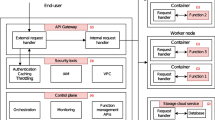
Overview
- The first book to holistically examine ISA, RISC, virtualization, cloud, mobile, quantum, and security
- Essential for practitioners, undergraduate and graduate students in the field of computer science
- Provides a website and security blogs for lecture notes, PPTs, labs, and the latest updates
Access this book
Tax calculation will be finalised at checkout
Other ways to access
About this book
In today’s workplace, computer and cybersecurity professionals must understand both hardware and software to deploy effective security solutions. This book introduces readers to the fundamentals of computer architecture and organization for security, and provides them with both theoretical and practical solutions to design and implement secure computer systems. Offering an in-depth and innovative introduction to modern computer systems and patent-pending technologies in computer security, the text integrates design considerations with hands-on lessons learned to help practitioners design computer systems that are immune from attacks.
Studying computer architecture and organization from a security perspective is a new area. There are many books on computer architectures and many others on computer security. However, books introducing computer architecture and organization with security as the main focus are still rare. This book addresses not only how to secure computer components (CPU, Memory, I/O, and network) but also how to secure data and the computer system as a whole. It also incorporates experiences from the author’s recent award-winning teaching and research.
The book also introduces the latest technologies, such as trusted computing, RISC-V, QEMU, cache security, virtualization, cloud computing, IoT, and quantum computing, as well as other advanced computing topics into the classroom in order to close the gap in workforce development.The book is chiefly intended for undergraduate and graduate students in computer architecture and computer organization, as well as engineers, researchers, cybersecurity professionals, and middleware designers.
Similar content being viewed by others
Keywords
Table of contents (10 chapters)
-
Front Matter
-
Back Matter
Authors and Affiliations
About the author
Paul Wang is a Professor and Chairperson of Computer Science at Morgan State University. He is a LINK Fellow and has held positions as the TSYS Endowed Chair in Cybersecurity with a $5 million endorsement, Director of the Center for Security Studies with more than 3,000 cyber students, and Chief Information and Technology Officer (CIO/CTO) of the National Biomedical Research Foundation. He has been a consultant to many companies and served on multiple boards and government and private sector technology committees. He was directly involved in drafting the National Initiatives of Cybersecurity Education (NICE) framework. His research areas include quantum computing, secure architecture, AI/ML, cybersecurity, and video indexing.
In addition to books, refereed publications, conference keynotes and numerous grant-related activities including recent grants from the NSF, NSA, Apple, and Microsoft, Paul holds four patents, three of which have been licensed to the industry. Paul Wang received his Ph.D. under Dr. Robert Ledley, the inventor of the body CT scanner, in 2004. He completed his postdoctoral studies in quantum computing at MIT and in data science at the University of Cambridge.
Bibliographic Information
Book Title: Computer Architecture and Organization
Book Subtitle: Fundamentals and Architecture Security
Authors: Shuangbao Paul Wang
DOI: https://doi.org/10.1007/978-981-16-5662-0
Publisher: Springer Singapore
eBook Packages: Computer Science, Computer Science (R0)
Copyright Information: Higher Education Press 2021
Softcover ISBN: 978-981-16-5661-3Published: 01 December 2021
eBook ISBN: 978-981-16-5662-0Published: 29 November 2021
Edition Number: 1
Number of Pages: XIII, 337
Number of Illustrations: 143 b/w illustrations
Topics: Processor Architectures, Computer System Implementation, Principles and Models of Security, Cryptology, History of Computing, Logic Design



